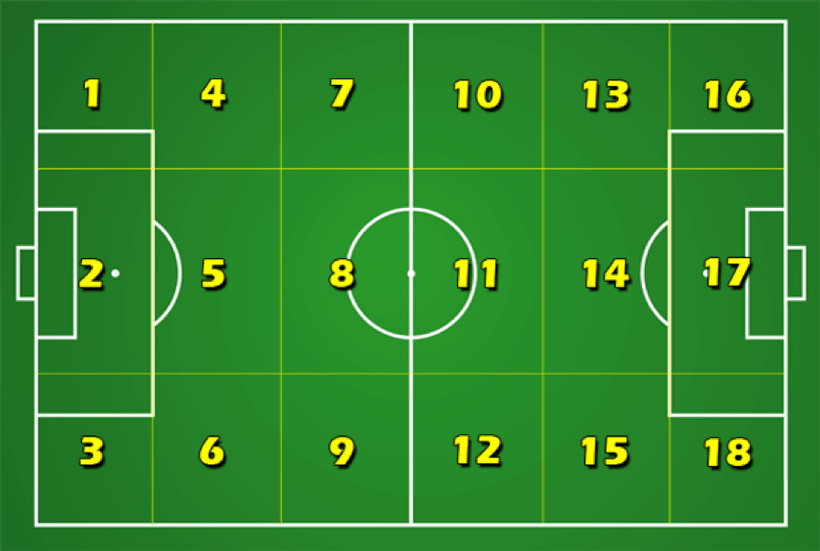Trent Alexander-Arnold: Less is more
The recurring theme here is repetition vs. efficiency. Why attempt a failed action 23 times when, by approaching it from another angle, you can achieve your result at the first try? Why keep beating at the door you have proven to be unable to unlock? See if the backdoor is unlocked. Climb through the window instead. Against Tottenham, Trent Alexander-Arnold checked the backdoor and found it unlocked.
Liverpool’s Trent Alexander-Arnold has emerged as a leading figure among young players over the past two years. The wing-back position has been around for a while, the likes of Roberto Carlos, Bixente Lizarazu, Ashley Cole, Dani Alves, and Jordi Alba have been playing through attacking wide areas from defensive ones for decades. It’s nothing new. But it is certainly more popular now, especially among the Premier League’s elite.
We know what he offers, what Chelsea’s Reece James, Man United’s Alex Telles, Man City’s Cancelo, Zinchenko and Walker offers, Tierney and Bellerin, Reguilón and Doherty; we get it. What I want to look at here is how, by using two consecutive Trent Alexander-Arnold Premier League appearances, the player’s impact from this position, the areas they occupy, the offensive decisions they make, and, ultimately, the mark they leave on the game, can vary in surprising, unexpected ways.
The fixtures in question were Burnley’s 1-0 win at Anfield and Liverpool’s 3-1 win over Tottenham Hotspur.
I previously used the Burnley game as an example to highlight how heavy player involvement (or plenty of actions – essentially what makes match stats match stats) does not automatically equal an effective or objectively ‘good’ performance.
Ah, a good example of the problem with purely statistical-based analysis. Any man or his dog would tell you Alexander-Arnold had a stinker tonight, but because he was heavily involved and pulled off a (big) number of actions, he gets a solid stats rating. pic.twitter.com/QxLndk3hfB
— The Tactical Times (@Tactical_Times) January 21, 2021
We can see the touch map (again, actions) from that game on the right. From this point, you can consider all left side maps to be the game against Spurs and the right to be the Burnley game:

Note the bottom far right area, referred to from this point as zone 18 (see image below).

Naturally, you might expect zone 18 to be the optimal area for crossing if you are a right-sided winger or wing-back, it stretches from the corner flag to the edge of the half-space, from the byline to the edge of the penalty area. It is, after all, where corner kicks are played, where out-swinging deliveries can be met, headed, volleyed as close to goal as in-swinging ones. You might expect it to be a danger area for crossing, I know I would. I know that plenty of full-backs, nervous centre backs and covering midfielders would agree.
So, why then, do we see two touch maps that suggest crossing from the danger zone is actually really ineffective? 23 crosses is a lot. Really. Why also do we see the player, so keen to cross the ball, in his next league appearance seem to avoid that optimum area entirely and yet still go on to provide more effective crosses?
Alexander-Arnold vs. Tottenham
85% Pass accuracy
3/5 Accurate long passes
1 Chance created
1 Assist
1/1 Shot on target
1 Goal
1/1 Dribble completed
5/6 Duels won
2 InterceptionsBack to his best. Pure accuracy tonight. Trent’s capable of winning games and tonight he reminded us pic.twitter.com/yIC6e35fxk
— The Tactical Times (@Tactical_Times) January 28, 2021
Here are the crossing maps:

The one from the Burnley game is stark. Entirely symptomatic of the game Liverpool played that night. It was repetitive, hopeful, fruitless delivery into the box. But look where they came from. Those are the touches we saw in optimal zone 18.
Compare that to the map for the game in London. Six crosses in total and one of those was a glorified short pass from the byline to the penalty spot. Far fewer balls, far more effective. And look at where they came from.
This is zone 15, what I like to call the deep cross zone. Early balls trying to catch a defence unaware or out of position; low, powerful, curling outswingers designed to turn a backline to face their own goal; these usually come from zone 15. Alexander-Arnold loves zone 15. He played a good portion of his Burnley crosses (seven) from there too.
So, how can a player hit 23 crosses, mostly from an area we would usually describe as offensively optimal, with absolutely none of them finding a target, and then in the next game hit 4 of 6 from a, perhaps, less optimal area, find his target with two and assist a goal?
Alexander-Arnold is an involved player, he is often among Liverpool’s most involved, he is a vital component of their offensive game and the statistics regularly support that truth. Against Tottenham, he was quieter (in relative terms). Here are the respective pass maps:

The first big thing you will notice is the sheer difference in quantity. He played 100 passes against Burnley, 38 fewer against Tottenham. 31% of those played against Burnley were inaccurate, just 10% against Spurs. Alexander-Arnold played just six inaccurate passes in that game, three of those were crosses and all six were progressive passes either directly into the penalty area or into a man in the final third.
Here are the long passes:

Alexander-Arnold’s passing range, and in particular his ability to find a man in space with a long pass, is one of his main strengths. Being able to switch play quickly and accurately can be a real asset, but it isn’t always effective. Likewise, the ability to find a teammate in space ahead of the midfield, sometimes on the shoulder of the defence, with a long pass can be. But not always. Against Burnley, it certainly wasn’t. Trent was too keen to use that pass, to force progression, to find Robertson or Salah or Mané with a long pass. It was, again, like his crossing, repetitive and fruitless.
Against Tottenham, he hit seven out of seven long balls. Just one switch of play (which was technically an overhit cross). He focused his attention on the half-space and the centre, the creative danger zone, zone 14. He looked for Firmino and for Salah, not as runners, not trying to force an unlikely break or error from a centre back, but rather to find them in spaces between midfield and defence, in the hole. He wasn’t playing speculatively, he was playing accurately. Less is more.
This is reflected further in the maps for passes into the final third:

Against Burnley, Trent played ten of these, eight were accurate. Nothing wrong or particularly notable about the number – it was eight of nine against Tottenham. What was remarkable were the passes he picked. Seven were to the right flank, again, looking for Salah, again in positions where the forward isn’t likely to find much joy. Two were, again, long switches of play, usually played more through lack of alternative than ingenuity.
Against Burnley there was a focus on that central zone again, four of these were the long passes we looked at a moment ago. It was positive, progressive and unpredictable. The passes matched the movement, the movement matched the intention to play dangerous, high risk, high reward football.
Passes into the penalty area:

We can almost immediately disregard most of those played against Burnley because so few were accurate. It was, again, repetitive. Most came from the deep cross zone, a little chipped pass hoping to find Salah either with his back to goal or running free between defenders. Others were hopeful crosses, covered already. None were effective. The most promising was an individual ball which came from the central zone, and was a slightly overhit curling cross into Firmino at the far post. This one stands out because Alexander-Arnold decided to drop into a position just outside of the D rather than wide in his usual crossing position.
Against Tottenham, you will notice almost all of his passes into the penalty area were played from closer to that half space, and most were accurate. None came from zone 18, as we saw already Trent spent barely any time there. His assist, an early, very high-quality cross played on a break, came from the border of zones 12 and 15. The only way a ball like that, from that area, is going to be effective at the first go – it was literally the only time he attempted that pass – is if the player has both a runner to meet it and the talent to pull it off. Alexander-Arnold had both.
By tucking into the half-space, by playing fewer passes more effectively, by not relying on the cruel and unreliable law of averages, he was able to play far greater effective football with far fewer attempts.
The recurring theme here is repetition vs. efficiency. Why attempt a failed action 23 times when, by approaching it from another angle, you can achieve your result at the first try? Why keep beating at the door you have proven to be unable to unlock? See if the backdoor is unlocked. Climb through the window instead. Against Tottenham, Trent Alexander-Arnold checked the backdoor and found it unlocked.
I decided to focus on Trent for this analysis piece for two reasons; the first was that he is a really interesting player with a technical arsenal matched by very few players on the world stage, the second was that each game represented one side of that dualistic debate – repetition vs. efficiency – and Trent featured heavily in both. We could have looked at a number of other players too. A pass can only be played if there’s a man to receive it, the failures of Alexander-Arnold against Burnley were on Firmino or Salah or Mané as much as they were on Trent; it’s always about the collective, but Alexander-Arnold presents a convenient and interesting embodiment of this concept. Repetition vs. efficiency. Less is more.


